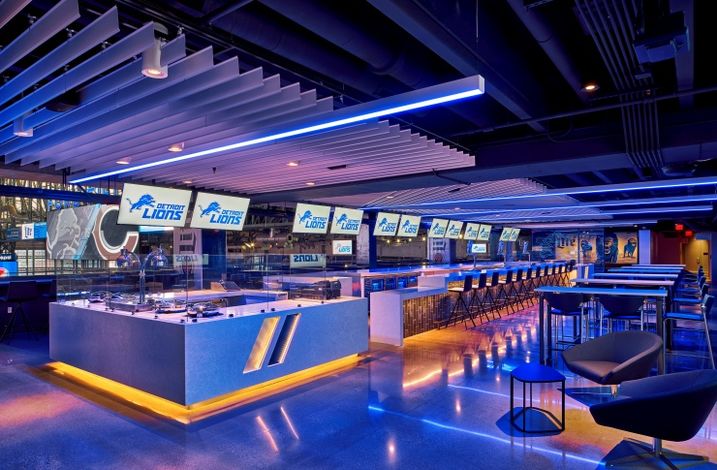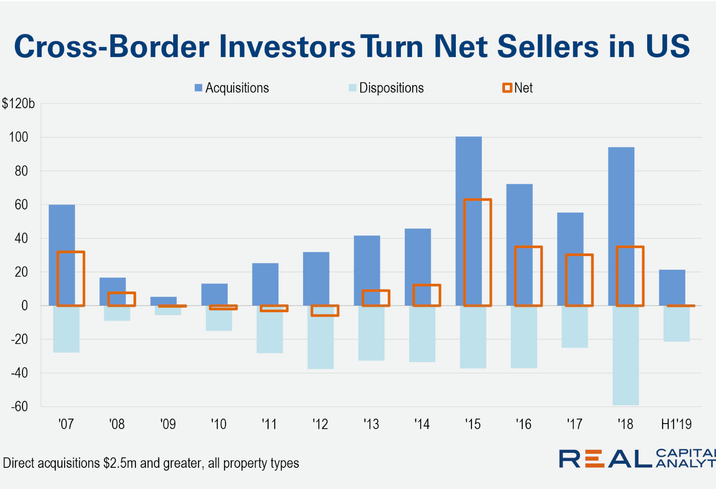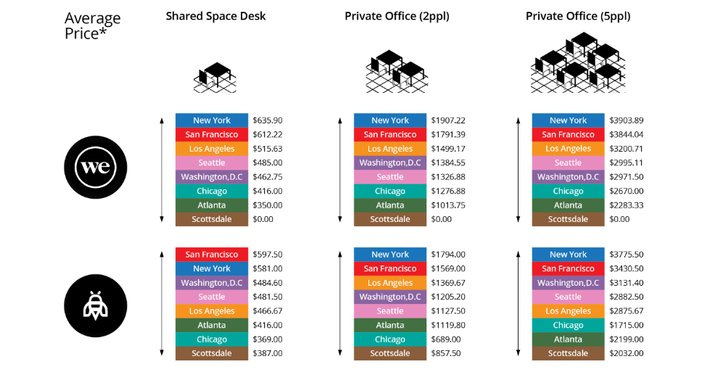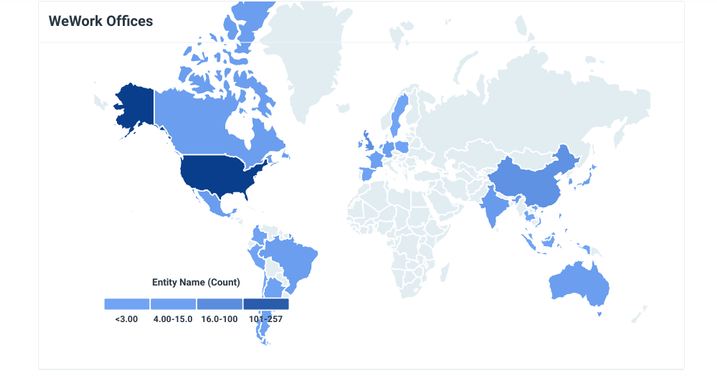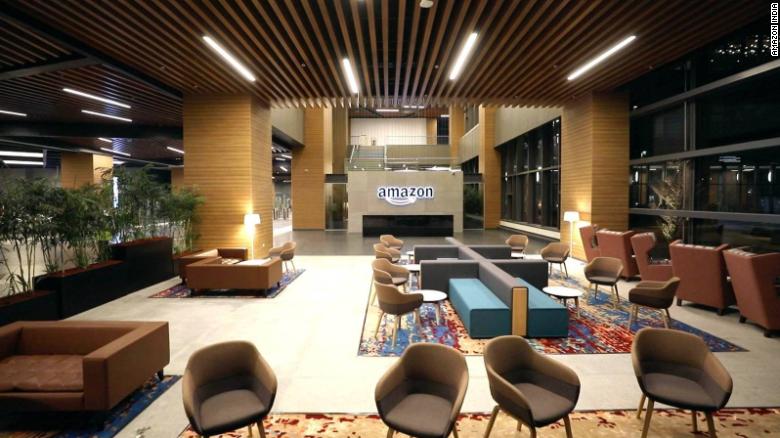Cities, counties and states across the U.S. are increasing their minimum wage as advocates push for a $15/hour nationwide baseline, and the rising labor costs are forcing owners and occupiers of commercial real estate to rethink their business models.
D.C. last month increased its hourly minimum wage to $14 and it will reach $15 next year under a law passed in 2016. Seven states have also enacted laws to raise the minimum wage to $15, and these states — primarily large ones like New York, California and Illinois — include 30% of all U.S. workers.
The U.S. House of Representatives in January passed a bill to gradually raise the nationwide minimum wage to $15, and while it has not moved forward in the Senate, the issue has become a central topic in the Democratic presidential primary.
While business groups argue the rising minimum wage could cause employers to cut jobs and go out of business, some research indicates the overall effects of minimum wage increases on employment may be overblown.
Regardless of if it will have widespread effects on the nation’s unemployment rate, individual businesses in the restaurant, hotel and industrial sectors are taking a hard look at how the rising wage could affect their bottom line.
The rising minimum wage has had an especially meaningful impact on hotels, which employ large numbers of workers and haven’t experienced strong revenue growth in recent years.
The last three years have been the only years this century in which labor costs have surpassed revenue growth for the U.S. hotel market, according to hotel research firm STR. Labor costs grew by 3.9%, 3.1% and 4.1% during 2018, 2017 and 2016, respectively, STR found. STR Senior Director Joseph Rael attributed the rising labor cost to a combination of local minimum wage increases and a more competitive market for workers. He said rising labor costs have been affecting every sector of the hospitality market from luxury hotels to economy chains.
“The big impact is going to be when revenues start going the other way,” Rael said. “When we start to see revenue declines, that’s when those wage pressures really affect the hotels.”
Some hotel owners and operators seeking new locations may favor parts of the country that haven’t increased the minimum wage to ensure they can keep making a profit, Rael said.
“When you’re looking at a market, you’re going to look at what are the costs, what kind of profit margins do you expect you can achieve long-term, and so [minimum wage] is certainly a factor when you look at some of these markets,” Rael said.
Robert W. Baird analyst Michael Bellisario, who covers hotel REITs, said he has heard many hotel owners express concerns about rising minimum wages.
“It’s happening across the board. Certain cities are worse than others, but because there are a lot of lower-price-point workers in a hotel, it’s impacting that part of the business,” Bellisario said. “Some hotel companies pay above the minimum wage, but when the floor gets raised everything above it has upward pressure, too.”
Apple Hospitality REIT named rising labor costs as one of the top risk factors associated with its portfolio in its 2018 annual earnings report. It said the company’s operating expenses as a percentage of revenue increased last year primarily because of rising labor costs.
“The company anticipates continued increases in labor costs due to government regulations surrounding wages,” Apple Hospitality REIT said in its earnings report, adding that the low unemployment rate also puts upward pressure on labor costs.
RLJ Lodging Trust, Pebblebrook Hotel Trust and Sunstone Hotel Investors have also named rising labor costs as an ongoing challenge in recent earnings reports. Bellisario said hotel developers are finding it harder to make the math work for new projects in areas with rising labor costs and slow-growing hotel revenues.
“Anyone who’s evaluating a new development today, you’re not delivering it until 24 or 36 months from now, and there’s a lot of uncertainties,” Bellisario said. “So you model 3% to 5% cost increases on the labor side, and that becomes disproportionately impactful when you’ve got to be more conservative in your underwriting.”
The Walt Disney Co. and Wincome Group both threatened last year to pull out of projects in Anaheim, California, if a $15 minimum wage initiative passed, and voters then approved the ballot measure in November.
“How are we going to attract a hotelier or developer to Anaheim with an already difficult political environment and tell them that it is going to cost you 20% to 30% more to run your business here?” Wincome Group CEO Paul Sanford told Bisnow last year. “I don’t see this as a solution.”
Warehouses
Companies that occupy industrial real estate tend to employ large numbers of minimum wage workers, and the rising labor costs associated with minimum wage increases could lead them to relocate. Colliers Research Analyst Dion Sorrentino, who is based in Boston, said Massachusetts increasing its minimum wage to $15 by 2023 is pushing some industrial users to look at cheaper markets.
“We have already seen quite a few users who don’t need to be in the area starting to look elsewhere, mostly at Pennsylvania and Ohio,” Sorrentino said. “That activity is happening … as [minimum wage] approaches $15 in 2023, we expect to see more and more pressure.” Sorrentino said he couldn’t disclose the names of the industrial users looking to relocate because they are his firm’s clients, but he said they are primarily small manufacturing companies that don’t need to be near population centers.
Luckily for the owners of industrial space near cities like Boston, e-commerce companies such as Amazon and Wayfair have gobbled up warehouse space near population centers to enable faster delivery times. The large e-commerce users have helped keep industrial vacancy down, but they have also contributed to rising rents.
Because rents and wages are the two top costs for an industrial user, Sorrentino said these trends are forcing small manufacturing businesses across the country to relocate away from urban areas.
“A lot of the New York users will move right across the border to Pennsylvania, and in Los Angeles they’re moving further out from the city,” Sorrentino said. “Since California is such a large population center, it’s harder to leave the state, but moving away from the city helps reduce rent costs, which mitigates the increasing wage costs.”
Restaurants
The restaurant industry is one of the most frequently discussed sectors in minimum wage debates, but as many of the major cities increasing the wage also have booming restaurant scenes, it can be hard to discern the immediate impacts.
Some business groups argue that independently owned restaurants can’t keep up with the rising costs associated with minimum wage increases and are forced to cut jobs and close their doors, while other research indicates the overall impact on restaurant employment may be negligible. Restaurant Association of Metropolitan Washington President Kathy Hollinger said D.C.’s rising minimum wage is putting pressure on small businesses in the nation’s capital.
“Do I think people are struggling a little bit with the increases? Yes, I do. I think they are and I think it’s harder to do business in the city,” Hollinger said. “These overall increases, coupled with new policies requiring money from small-business operators, the bottom line is it is really pushing on a pressure point.”
Hollinger said the minimum wage is one of several rising costs that D.C. has recently pushed on restaurants, including a 0.62% quarterly payroll tax to support paid family leave that went into effect July 1 and a 2016 law requiring businesses with over 20 people to offer commuter benefits.
“Small-business owners are having to find a way to identify pots of money when they have such very thin profit margins, that’s where the struggle is,” Hollinger said. “There are all of these things happening leading into 2020, and the business model just can’t be sustained because there’s not enough cash flow to account for all of these different increases.”
She pointed to restaurants that have recently closed in D.C., including Penn Commons, Proof and 701 Restaurant as examples of businesses that have shuttered as a result of rising costs, which also include market-driven factors such as rent increases.
Some restaurants are also choosing to cross the river into Virginia, where they don’t face the same minimum wage increases. When Meridian Pint closed its Columbia Heights bar and restaurant in April and announced it would reopen in Arlington, owner John Andrade cited D.C.’s minimum wage as one of the main factors.
“When you look at businesses in D.C., when employees are commuting from Virginia anyway, it makes sense for a business owner to say, ‘Why not just move across the border?’ especially with Metro and public transit,” the Employment Policies Institute’s Samantha Summers said.
EPI, a nonprofit research organization, released a study in January that found if a nationwide $15 minimum wage were implemented in January, it would reduce employment by roughly 2 million jobs.
“Businesses have no other options than raising prices, laying off employees, cutting back hours or closing altogether,” Summers said.
But research from other organizations studying the employment effects of states that have already increased the minimum wage has come to different conclusions. A study released this month found that New York City’s restaurant industry is “thriving” despite raising its minimum wage in phases that reached $15 at the end of 2018. The study, from The New School and the National Employment Law Project, found New York City’s restaurant industry has experienced stronger job growth than 12 other large U.S. cities that didn’t increase the minimum wage over the last five years. NELP Researcher Yannet Lathrop, who worked on the study, said that its findings were consistent with the majority of research on the effects of minimum wage increases.
“These studies in general have been concluding that as minimum wage increases take effect, even to a significant amount like $15, that they really do not have that much of an effect on employment,” Lathrop said.
Lathrop also pointed to an April working paper from the University of California Berkeley’s Institute for Research on Labor and Employment that studied six cities that have already increased their minimum wage above $10: D.C., Chicago, Oakland, San Francisco, San Jose and Seattle. The study found no significant employment losses in the cities.
Another IRLE study that Lathrop pointed to disputed the argument that businesses would move to neighboring jurisdictions with lower minimum wages. The 2010 study looked at 288 pairs of neighboring counties separated with different minimum wages, and found no adverse employment effects on the jurisdictions with higher minimum wages.
“These businesses and their customer bases tend to be local,” Lathrop said. “These businesses, even big-box, multi-state businesses, are not going to relocate to Virginia because D.C. and Montgomery County’s minimum wage is closer to $15. It’s just not going to happen.”

